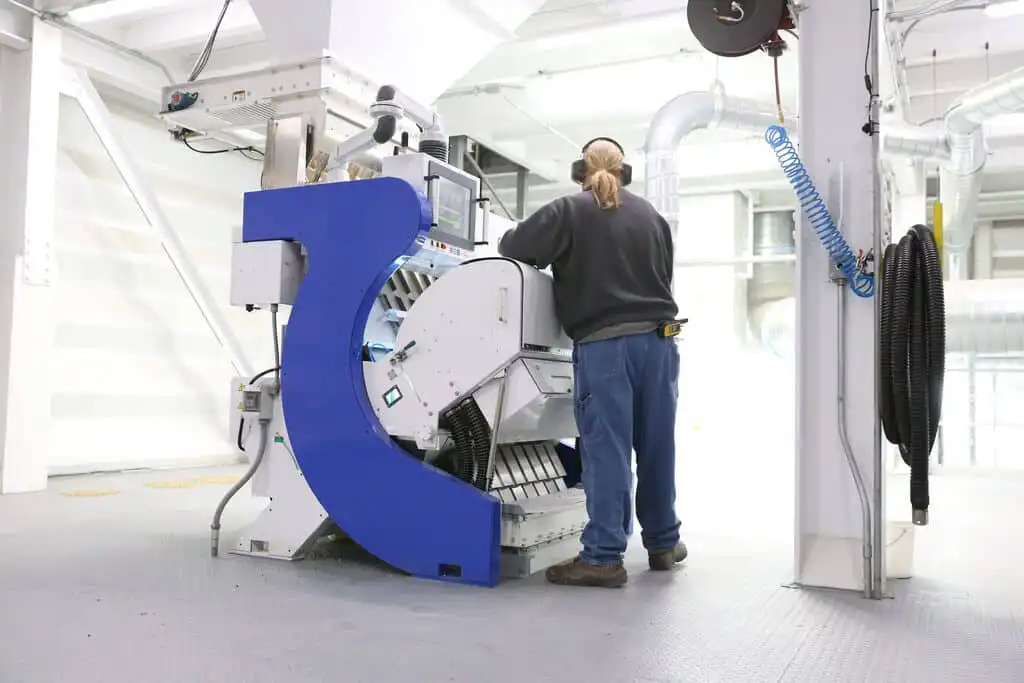Keeping safety needs to be top-of-mind — safety helps achieve that.
The stakes are high for workers in the seed industry, and Standard Operating Procedures (SOPs) can help create safer, more efficient work environments when implemented well.
In fact, data from the U.S. Bureau of Labor Statistics in 2019 indicates the agricultural sector is the most dangerous with a fatality rate of 23.1 deaths per 100,000 workers. In Great Britain, the Health and Safety Executive’s 2021-22 data shows the rate of fatal injury to workers in agriculture, forestry and fishing industries is 8.03 per 100,000 workers — 21 times as high as the all-industry rate.
“Agriculture and the seed industry are very dangerous. Countless heavy machines and equipment present hazards to operate and work around,” says Kyle Dixon, safety director, Beck’s Hybrids.
Employees navigate the hazards that heavy machines and equipment bring to the workplace daily, and it’s up to these organizations to take the necessary steps to protect their workers, many of which rely on SOPs.
“We want them to be able to make it home to their family or loved ones in the same physical and mental shape that they report to work in,” Dixon says.
These written “how-to” procedures explicitly describe the necessary steps to safely complete on-the-job tasks.
“SOPs are so important,” says Drew DuBois, vice president of Operations and Supply Chain, AgReliant Genetics. “The value they bring to an organization is in helping to mitigate and recognize safety, quality or productivity issues. When you put in the work up front to create SOPs, you can take a lot of risk out of your
business and drive a higher level of
consistency.”
Safety First
The last thing companies want to do is create an SOP that increases risk.
“A mistake in any safety procedure would be not placing employee safety first. If Beck’s does not design and operate SOP processes with employee safety in mind, it could result in a tragedy,” says Dixon.
Jody Trevathan, corporate health & safety manager for AgReliant, is especially focused on the safety of each SOP.
“Not only are we outlining how to do a job, but also if there is a safety expectation involved, such as if there is PPE required, or if there is a lock-out, tag-out required for a specific task, as well as how to do that procedure,” Trevathan says.
He believes it’s a misconception that safety steals efficiency or speed.
“In general, people tend to think that safety steps will slow us down. But if you’re working with experts who know their jobs, they will know how to do it safety and efficiently, because we can’t do anything efficiently if people are
getting hurt,” Trevathan says.
Simple Steps
Creating these documented steps is not always a simple process. It can take make writing and review cycles to fine tune a procedure.
“The person doing the work daily is the one who normally knows the process the best and can help improve safety, quality, and efficiency,” Dixon says.
Trevathan agrees.
“If you’re writing an SOP for the bagging line, for example, get the best baggers to write down their steps and how they do their job so well,” he says.
Team leads and supervisions review and assess those steps for gaps in
productivity, safety, efficiency and quality, before going back to the expert operators for testing.
“Don’t assume that something that sounds good on paper will work in the facility,” Trevathan says.
In a large company, it’s a mistake to create SOPs based on a single location, no matter how efficient it is.
“It’s even better if you can have experts, if not from all locations, from a group of locations, to have them review everything together,” Trevathan says.
But, perhaps the biggest mistake is making SOPs too complicated, and unfortunately that’s really easy to do.
“You really have to make the format as simple as possible. Perhaps you skip some of the wording by adding a photo, or add a video to go with it,” DuBois explains. “It has to be approachable and usable and scalable.”
Implementing Issues
Once created, DuBois suggests housing all company SOPs in a common, easily accessible database, and completing regular audits.
But the best and most current SOPs will still fail if they aren’t followed correctly every time.
“If we don’t focus on the safest and most efficient ways to operate equipment, then an employee could get injured, equipment could be damaged, we could produce a product that is less than satisfactory, or our productivity would suffer,” Dixon says.
Trevathan says implementation comes back to creating the correct SOP in the first place.
“Everyone has to do it right every time, and to do that, we have to have it outlined with exactly what the expectation is,” he says.
DuBois also recommends explaining why SOPs matter to improve employee buy in.
“It isn’t to micromanage. It’s about creating standards that take away risk and variability,” he says.
Training Tools
SOPs also prove their worth by streamlining the training process for new workers.
“SOPs are utilized for training purposes in employee onboarding, analyzing the effectiveness of current processes, and to provide a record of changes to ensure errors or inaccuracies are not repeated,” Dixon says.
The goal is to have employees that are trained and knowledgeable enough to step in and successfully run a process by following the SOP.
“We want to develop deep bench strength, where we are two or three employees deep on every role. That’s possible when we train using SOPs,” DuBois says.
In the seed industry, companies may have four shifts with four different operators working on conditioning, treating and packaging. If those folks are all doing the job differently, operational excellence in impossible.
“The trick is to pinpoint the one doing the job the most efficiently and create that SOP, essentially duplicating those higher performing employees,” Trevathan says.
A Must to Maintain
However, SOPs are not a standard to follow until the end of time. Regular maintenance is critical, especially at first.
“In the beginning, it’s going to change a lot, no matter how much you vet the process. Be prepared to rewrite an SOP multiple times within the first year,” Trevathan says, recalling one SOP for stacking bulk seed boxes that changed three times within the first three months.
“We found gaps we just didn’t know we had,” he says.
After that, revisions are less frequent, unless new technology is introduced somewhere within an organization.
“That can really be a catalyst,” Trevathan says.
And, more than just annual revision, successful SOPs need to be open for constant critique from those using them.
Dixon says Beck’s makes improvements to their SOPs based on the feedback received from the employees that operate and utilize the machinery daily.
“The highlights of Beck’s SOP process are focused on the employee, giving them an opportunity to share their insight and concerns around a process, using employees ideas to improve or make changes where applicable,” Dixon says.
AgReliant also wants employees to challenge that standard. “I’ve heard people say that SOPs take all the brain power out of a task, but to us, that’s the furthest thing from the truth. We’re creating a standard to work within, but if they have an idea to make the business more reliable, we invite them bring that up so it can be tested,” he says.
Sometimes one suggestion can be multiplied over to similar processes, so an improvement in one place can make a big impact across the whole company. That’s why it’s important to make the process for changing an SOP accessible enough it can be done at any time.
“We want to give those people credit,” Trevathan says.
Consistent Not Complacent
Complacency is one of the hardest things to combat in the safety world.
“These workers come to the same place and do the same job. Every human being is subject to fall victim to complacency when that happens, but SOPs are the single best way to combat that,” Trevathan says.
“It’s still difficult, but when you outline the expectation very clearly, it leaves very little leeway for leaving out a step, and that’s when things can go wrong.”
Dixon agrees.
“SOPs and best operating practices need to be shared, reviewed, and updated to make sure we are operating equipment as safely, efficiently, and to produce the best quality product as possible,” Dixon says.
For DuBois, it’s about truly creating consistency.
“The single biggest thing we can do for our business is to be painstakingly
reliable.”
Read more at:
Canadian Report Shows Impact of Labor Shortage on Ag
Seed Companies Versus the Generation Turnover
3 Ways to Boost Productivity: Communicate, Prepare and Establish Trust












